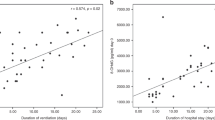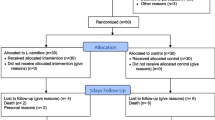Abstract
Neonatal sepsis is among the major causes of neonatal death. Oxidative stress is involved in detrimental pathways activated during neonatal sepsis, eventually leading to organ dysfunction and death. Reaching a definitive early diagnosis of neonatal sepsis is often challenging, as causative microbes typically require several days of blood culturing. The aim of this study was to evaluate the role of enzymatic and non-enzymatic antioxidants as early predictive biomarkers of neonatal sepsis and as predictors of disease outcome. For the purposes of this study, 100 neonates were recruited from the Neonatal Intensive Care Unit, Faculty of Medicine, Cairo University: 70 with sepsis (group 1) and 30 age and gender-matched neonates without sepsis, comprising the control group (group 2). The activities of glutathione peroxidase (GPX), glutathione reductase (GR), catalase (CAT), albumin, serum uric acid (SUA), and creatine phosphokinase (CPK) were measured. Serum levels of albumin and SUA were significantly lower among group 1 compared with group 2 (P < 0.001), with OR, 0.035 (95% CI, 0.007–0.174) for SUA. Conversely, serum GPX, CAT, and CPK were found to be significantly higher among group 1 (P < 0.05), with an OR of 1.02 (95% CI, 1.007–1.04) for CAT. Results suggested that serum albumin, SUA, GPX, CAT, and CPK could effectively function as early diagnostic biomarkers of neonatal sepsis and indicated an association between low albumin levels and poor disease outcome. Further clinical-biochemical investigations are needed to define the most effective antioxidant therapy for neonatal sepsis.
Similar content being viewed by others
References
Aman J, Van Der Heijden M, Van Lingen A et al (2011) Plasma protein levels are markers of pulmonary vascular permeability and degree of lung injury in critically ill patients with or at risk for acute lung injury/acute respiratory distress syndrome. Crit Care Med 39:89–97. https://doi.org/10.1097/CCM.0b013e3181feb46a
Bajčetić M, Otašević B, Prekajski NB et al (2014a) Antioxidative system in the erythrocytes of preterm neonates with sepsis: the effects of vitamin E supplementation. Ann Clin Biochem 51:550–556. https://doi.org/10.1177/0004563213503317
Bajčetić M, Spasić S, Spasojević I (2014b) Redox therapy in neonatal sepsis: reasons, targets, strategy, and agents. Shock 42:179–184
Batra S, Seema RK et al (2000) Alterations in antioxidant status during neonatal sepsis. Ann Trop Paediatr 20:27–33. https://doi.org/10.1080/02724930092039
Betteridge DJ (2000) What is oxidative stress? In: Metabolism: clinical and experimental. W.B. Saunders, pp 3–8
Bracci R, Buonocore G (2003) Chorioamnionitis: a risk factor for fetal and neonatal morbidity. Neonatology 83:85–96. https://doi.org/10.1159/000067956
Cao A, Trabalza N, DeVirgiliis S et al (1971) Serum creatine kinase activity and serum creatine kinase isoenzymes in newborn infants. Neonatology 17:126–134. https://doi.org/10.1159/000240307
Clahsen PC, Moison RMW, Holtzer AJ, Berger HM (1992) Recycling of glutathione during oxidative stress in erythrocytes of the newborn. Pediatr Res 32:399–402
Cohen-Wolkowiez M, Moran C, Benjamin DK et al (2009) Early and late onset sepsis in late preterm infants. Pediatr Infect Dis J 28:1052–1056. https://doi.org/10.1097/INF.0b013e3181acf6bd
Couto N, Wood J, Barber J (2016) The role of glutathione reductase and related enzymes on cellular redox homoeostasis network. Free Radic Biol Med 95:27–42
Dua A, Kaur NGP et al (2017) Oxidative stress induced cell damage and antioxidant enzyme response in human lymphocytes. Int Pharm BiolArch 8:33–39
Ershad M, Mostafa A, Dela Cruz M, Vearrier D (2019) Neonatal sepsis. Curr Emerg Hosp Med Rep 7:83–90. https://doi.org/10.1007/s40138-019-00188-z
Goldstein B, Giroir B, Randolph A (2005) International pediatric sepsis consensus conference: definitions for sepsis and organ dysfunction in pediatrics. In: Pediatric Critical Care Medicine. Pediatr Crit Care Med
Gomella T, Cunningham M, Eyal FZK (2004) Clinical manual of neonatology. Balt McGraw Hill 199:289–292
Gomella TL, Cunningham MD, Eya FG, Tuttle DJ (2013) Gestational age and birthweight classification. In: Neonatology: management, procedures, on-call problems, diseases, and drugs, 7e. pp 29–42
Hagberg H (2004) Mitochondrial impairment in the developing brain after hypoxia-ischemia. In: J Bioenerg Biomembr Springer, pp 369–373
Harris ED (1992) Regulation of antioxidant enzymes 1. FASEB J 6:2675–2683. https://doi.org/10.1096/fasebj.6.9.1612291
Kapoor K, Basu S, Das BK, Bhatia BD (2006) Lipid peroxidation and antioxidants in neonatal septicemia. J Trop Pediatr 52:372–375. https://doi.org/10.1093/tropej/fml013
Lee JW, Davis JM (2011) Future applications of antioxidants in premature infants. Curr Opin Pediatr 23:161–166
Matyas M, Zaharie G (2019) Antioxidants at newborns. In: Antioxidants. IntechOpen
Metsvaht T, Ilves P, Talvik T et al (2007) Possible oxidative stress in healthy term newborns. Acta Paediatr 88:1299–1300. https://doi.org/10.1111/j.1651-2227.1999.tb01038.x
Morris I, Molloy EJ (2008) Albumin administration in the management of neonatal hypoalbuminaemia. Arch Dis Child Fetal Neonatal Ed. 93
Nejad RK, Goodarzi MT, Shfiee G et al (2016) Comparison of oxidative stress markers and serum cortisol between normal labor and selective cesarean section born neonates. J Clin Diagnostic Res 10:BC01–BC03. https://doi.org/10.7860/JCDR/2016/16935.7974
Ochoa JJ, Ramirez-Tortosa MC, Quiles JL et al (2003) Oxidative stress in erythrocytes from premature and full-term infants during their first 72h of life. Free Radic Res 37:317–322. https://doi.org/10.1080/1071576021000050438
Paul A, Thomson VS, Refat M et al (2019) Cardiac involvement in beta-thalassaemia: current treatment strategies. Postgrad Med 131:261–267
Perrone S, Negro S, Tataranno ML, Buonocore G (2010a) Oxidative stress and antioxidant strategies in newborns. J Matern Neonatal Med 23:63–65
Perrone S, Tataranno ML, Negro S et al (2010b) Early identification of the risk for free radical-related diseases in preterm newborns. Early Hum Dev 86:241–244. https://doi.org/10.1016/j.earlhumdev.2010.03.008
Poggi C, Dani C (2018) Sepsis and oxidative stress in the newborn: from pathogenesis to novel therapeutic targets. Oxid Med Cell Longev. https://doi.org/10.1155/2018/9390140
Puopolo KM, Draper D, Wi S et al (2011) Estimating the probability of neonatal early-onset infection on the basis of maternal risk factors. Pediatrics 128. https://doi.org/10.1542/peds.2010-3464
Rahal A, Kumar A, Singh V et al (2014) Oxidative stress, prooxidants, and antioxidants: the interplay. Biomed Res Int
Reinhart K, Daniels R, Kissoon N et al (2017) Recognizing sepsis as a global health priority — a WHO Resolution. N Engl J Med 377:414–417
Rodwell RL, Leslie AL, Tudehope DI (1988) Early diagnosis of neonatal sepsis using a hematologic scoring system. J Pediatr 112:761–767. https://doi.org/10.1016/S0022-3476(88)80699-1
Saugstad OD (1990) Oxygen toxicity in the neonatal period. Acta Paediatr Scand 79:881–892
Schrag SJ, Farley MM, Petit S et al (2016) Epidemiology of invasive early-onset neonatal sepsis, 2005 to 2014. Pediatrics 138:e20162013
Spasojević I, Obradović B, Spasić S (2012) Bench-to-bedside review: neonatal sepsis - redox processes in pathogenesis. Crit Care 16:221
Taverna M, Marie AL, Mira JP, Guidet B (2013) Specific antioxidant properties of human serum albumin. Ann Intensive Care 3:1–7
Torer B, Hanta D, Yapakci E et al (2016) Association of serum albumin level and mortality in premature infants. J Clin Lab Anal 30:867–872. https://doi.org/10.1002/jcla.21949
Varsila E, Hallman M, Andersson S (1994) Free-radical-induced lipid peroxidation during the early neonatal period. Acta Paediatr Int J Paediatr 83:692–695. https://doi.org/10.1111/j.1651-2227.1994.tb13120.x
Wynn JL, Wong HR, Shanley TP et al (2014) Time for a neonatal-specific consensus definition for sepsis. Pediatr Crit Care Med 15:523–528
Funding
This study was funded in its entirety by its authors with no other funding from agencies or institutions.
Author information
Authors and Affiliations
Corresponding author
Ethics declarations
All procedures performed in the study were in accordance with the ethical standards of the Kasr Al-Ainy School of Medicine and in compliance with the 1964 Helsinki Declaration and its later amendments or comparable ethical standards. Written informed consent was obtained from each neonate’s parent/guardian after a full explanation of the study protocol.
Conflict of interest
The authors declare no competing interests.
Additional information
Publisher's Note
Springer Nature remains neutral with regard to jurisdictional claims in published maps and institutional affiliations.
Rights and permissions
About this article
Cite this article
Abdou, D.M., Saied, H. & Amrousy, Y.M. Role of enzymatic and non-enzymatic antioxidants among Egyptian neonatal sepsis. Comp Clin Pathol 30, 635–640 (2021). https://doi.org/10.1007/s00580-021-03254-9
Received:
Accepted:
Published:
Issue Date:
DOI: https://doi.org/10.1007/s00580-021-03254-9




